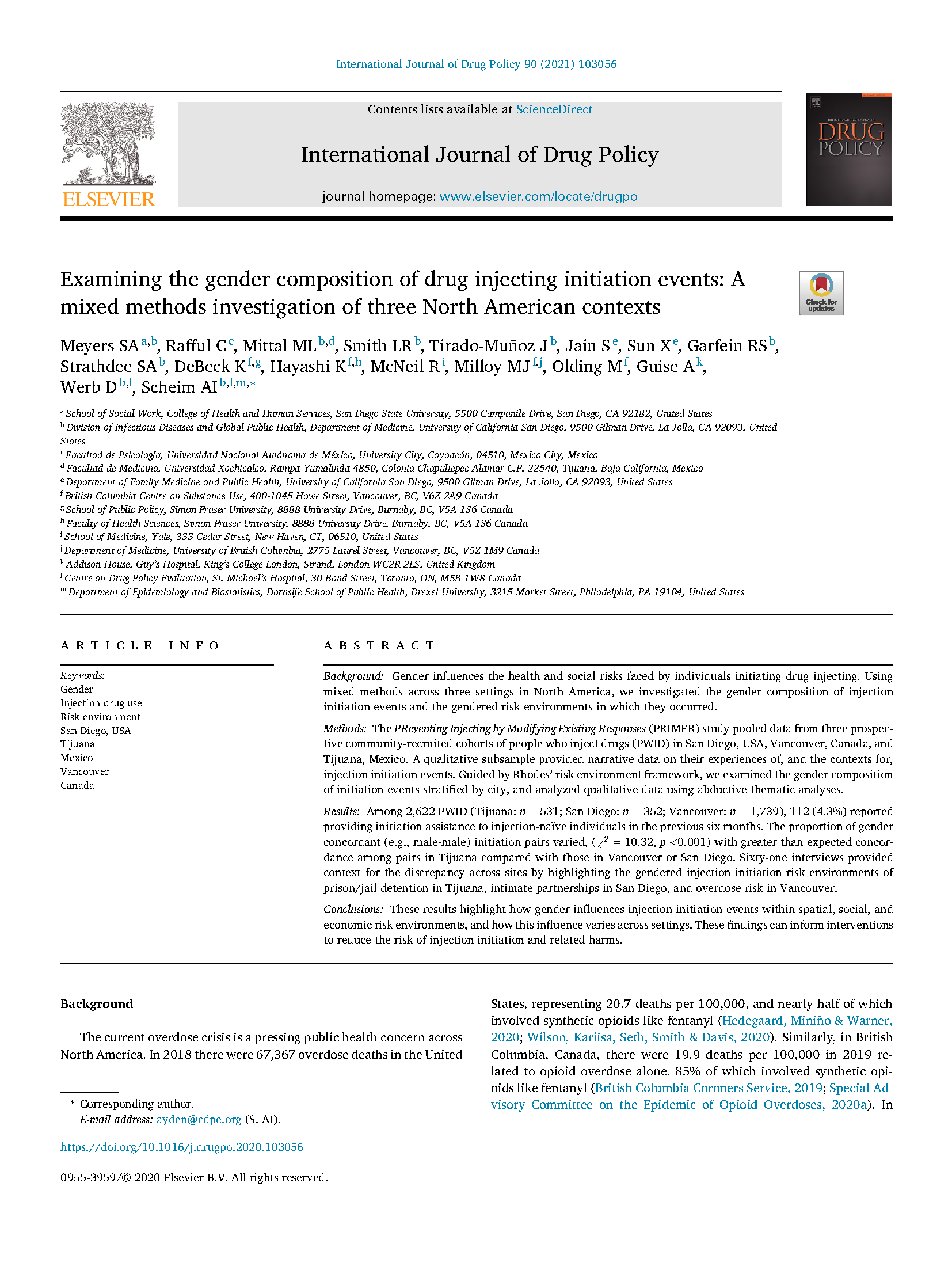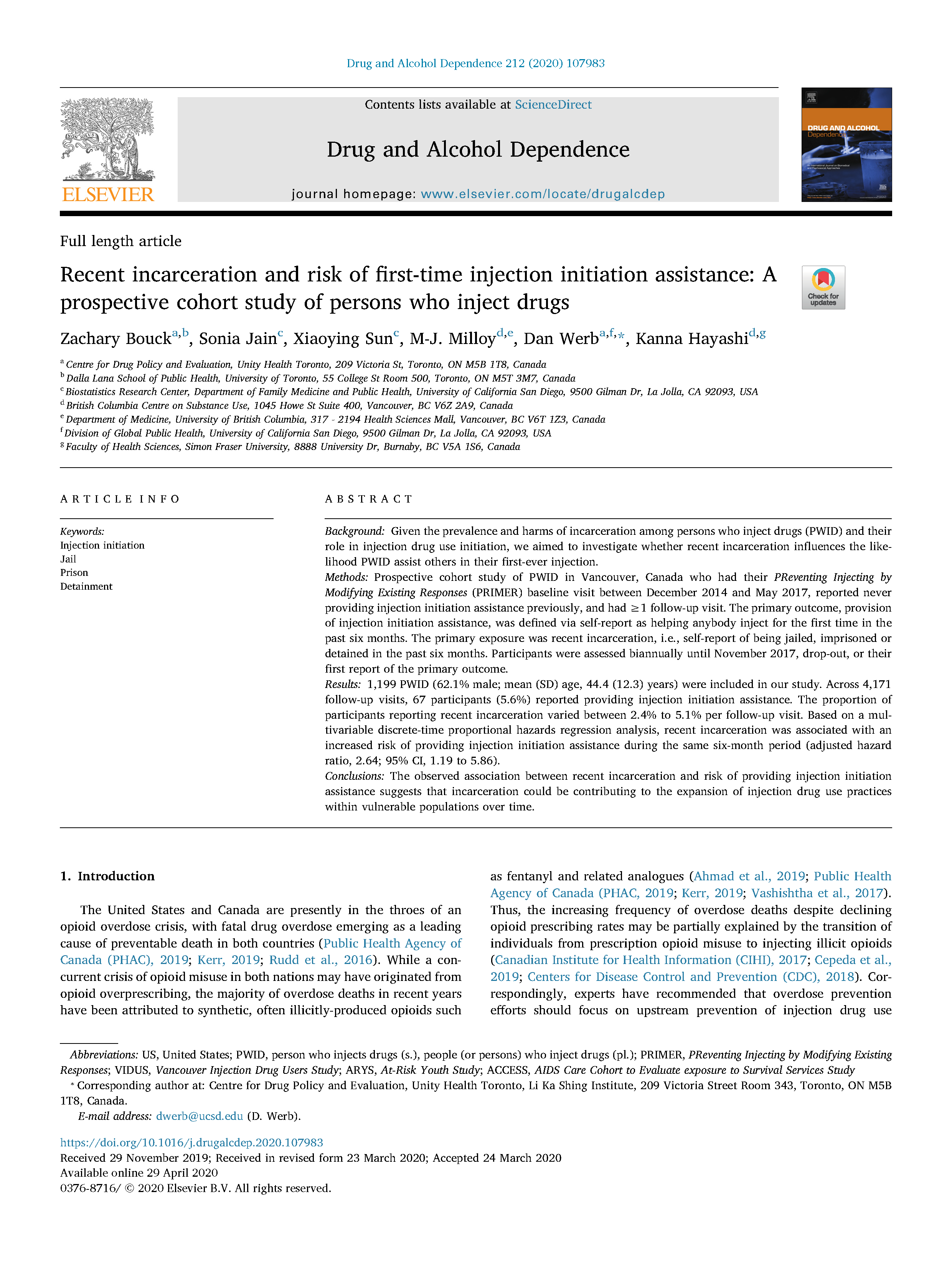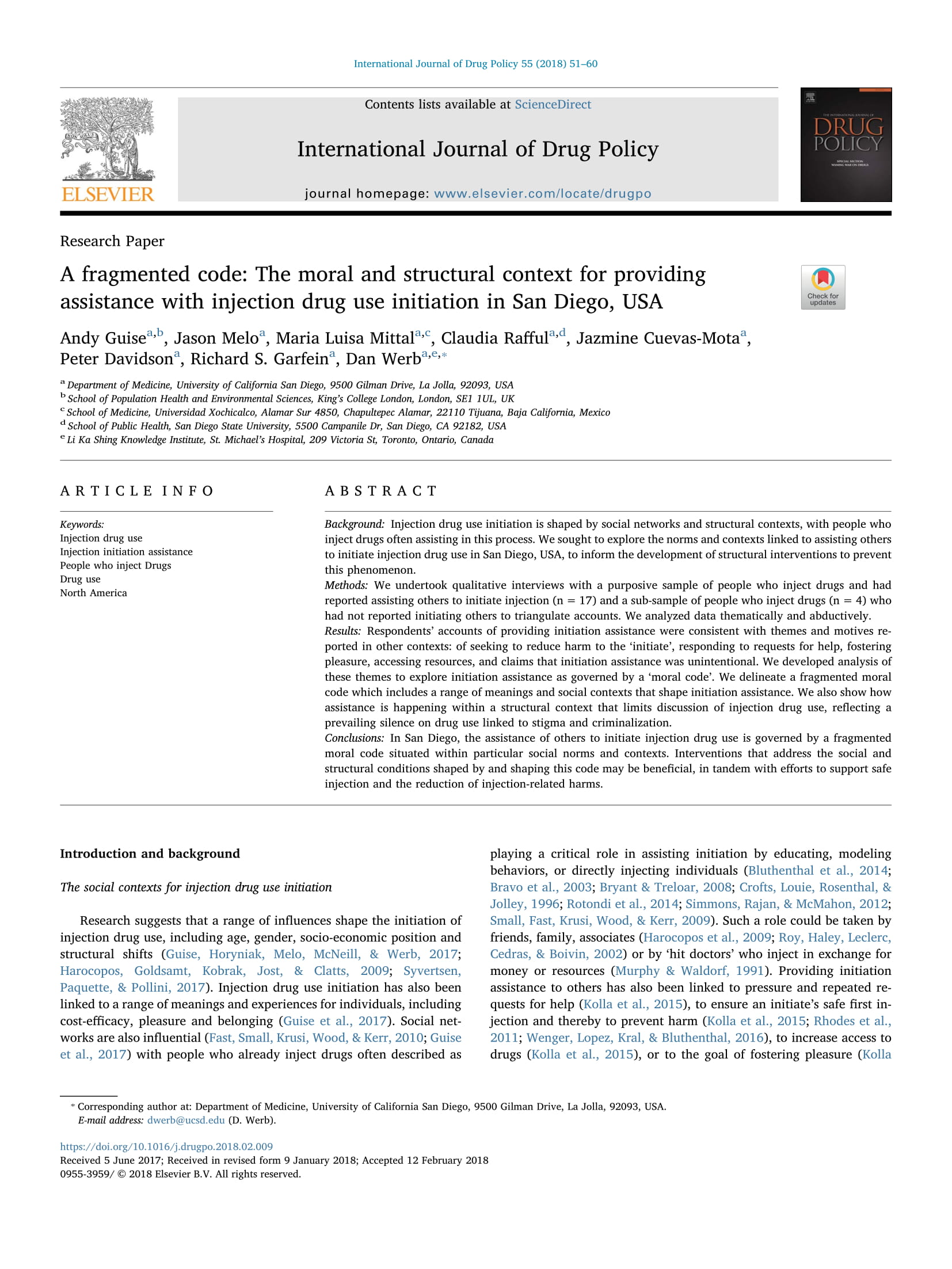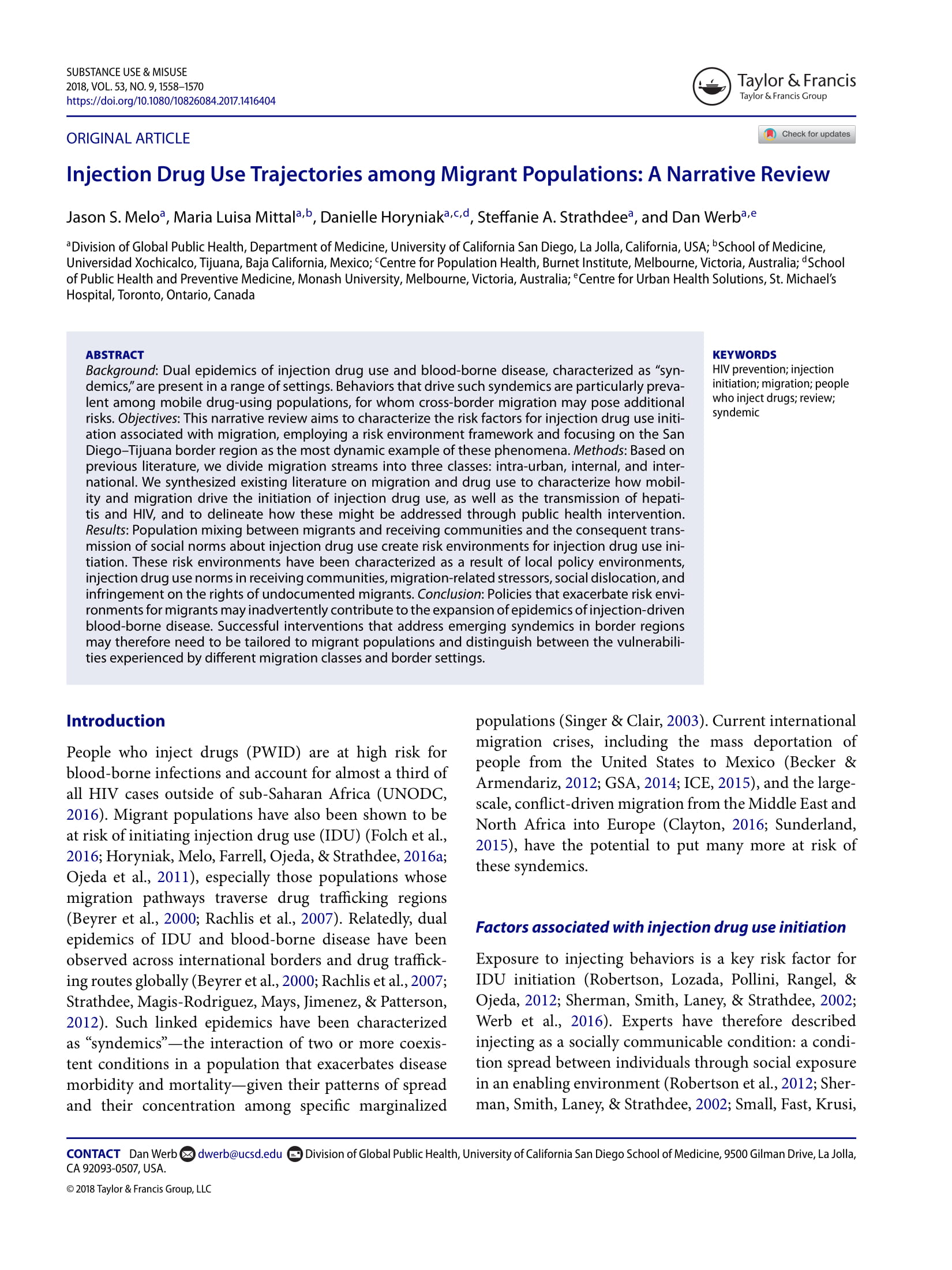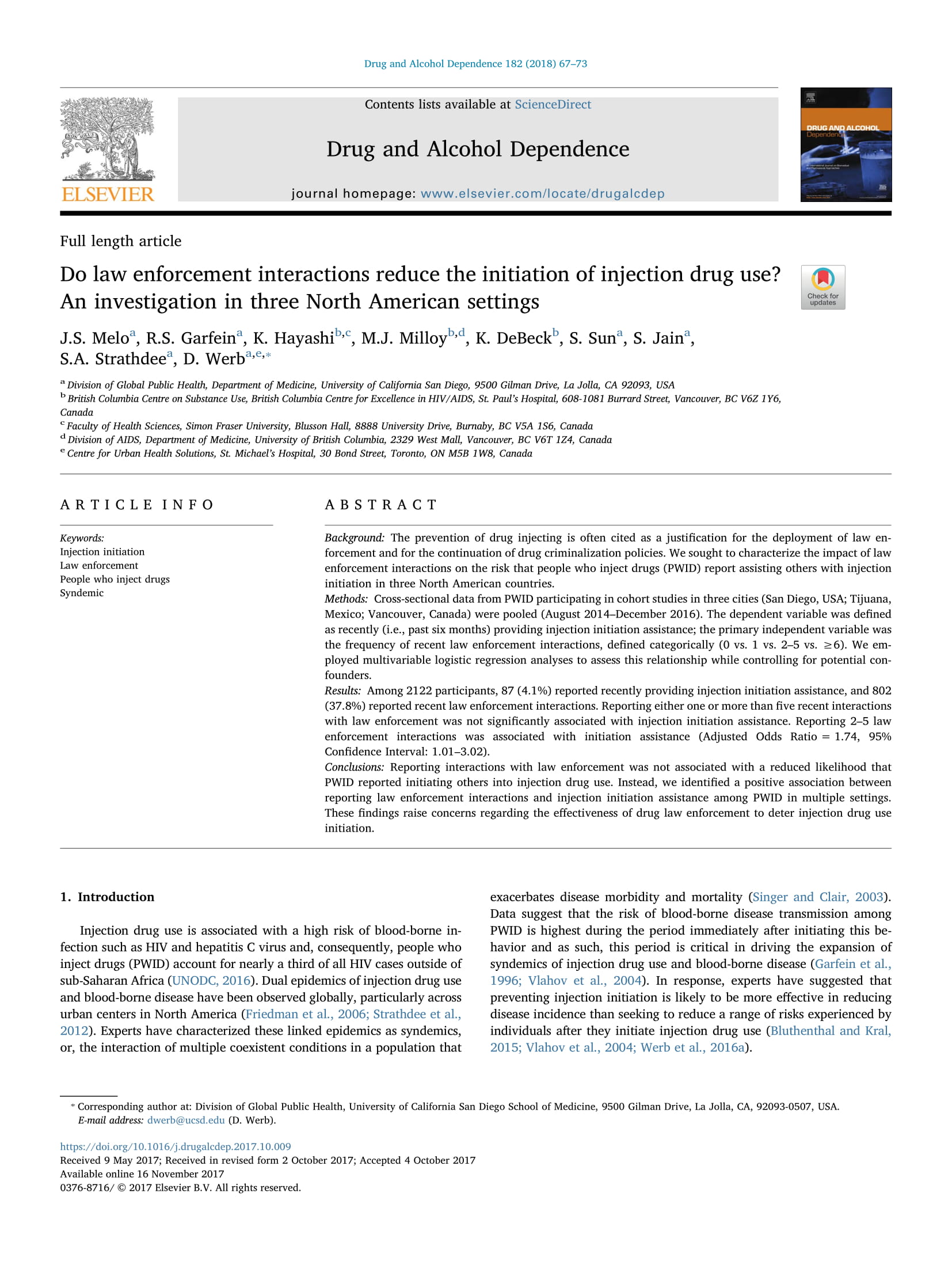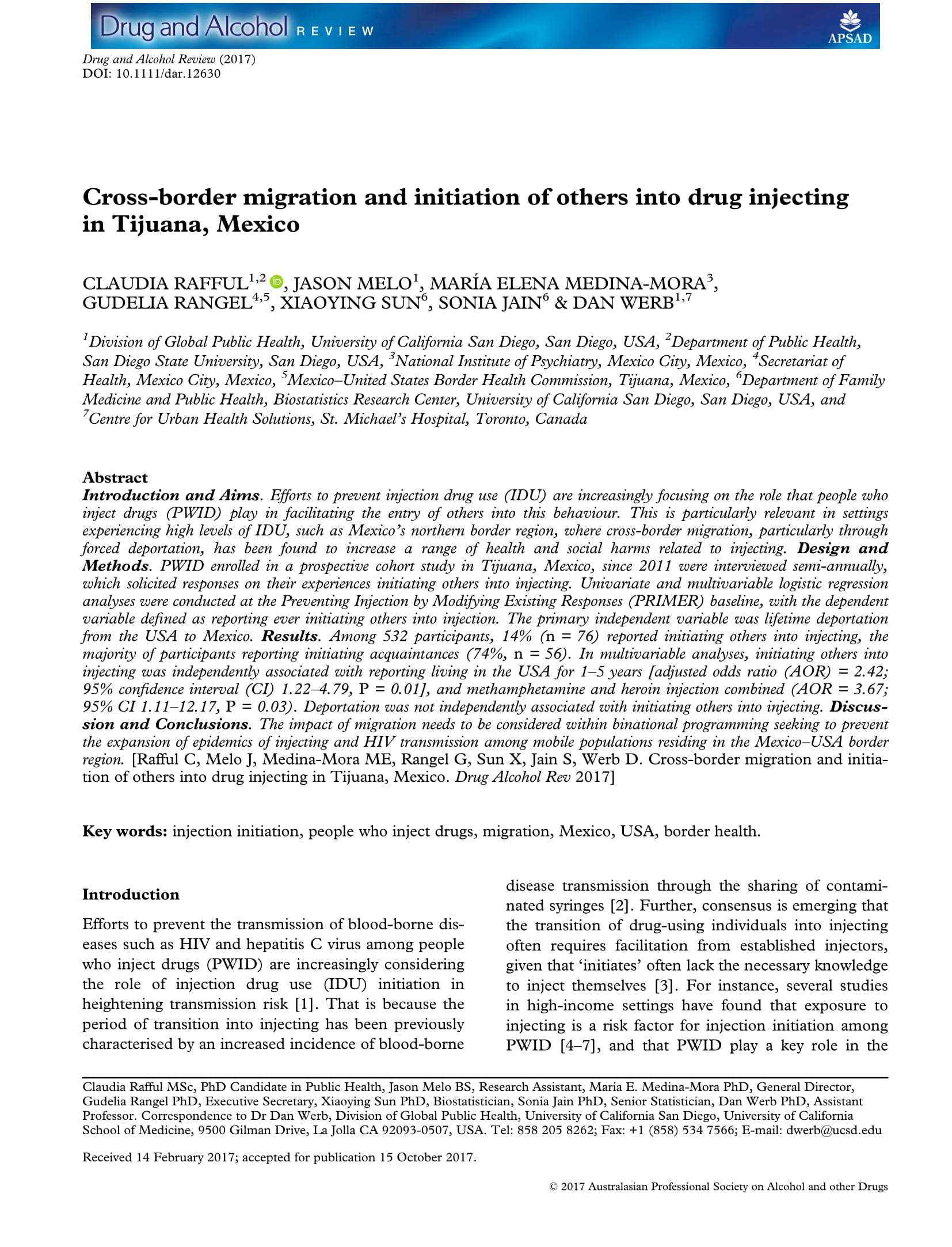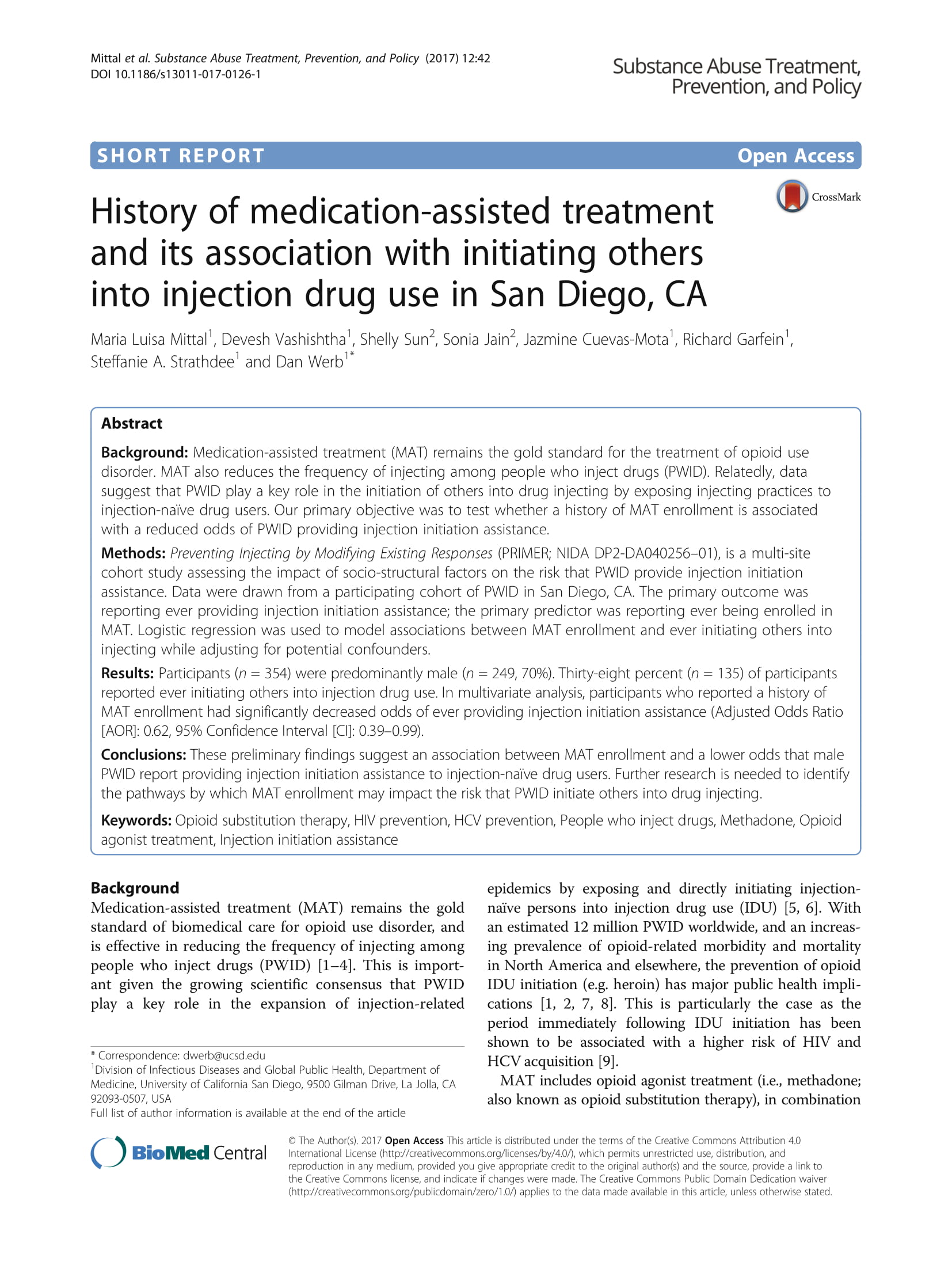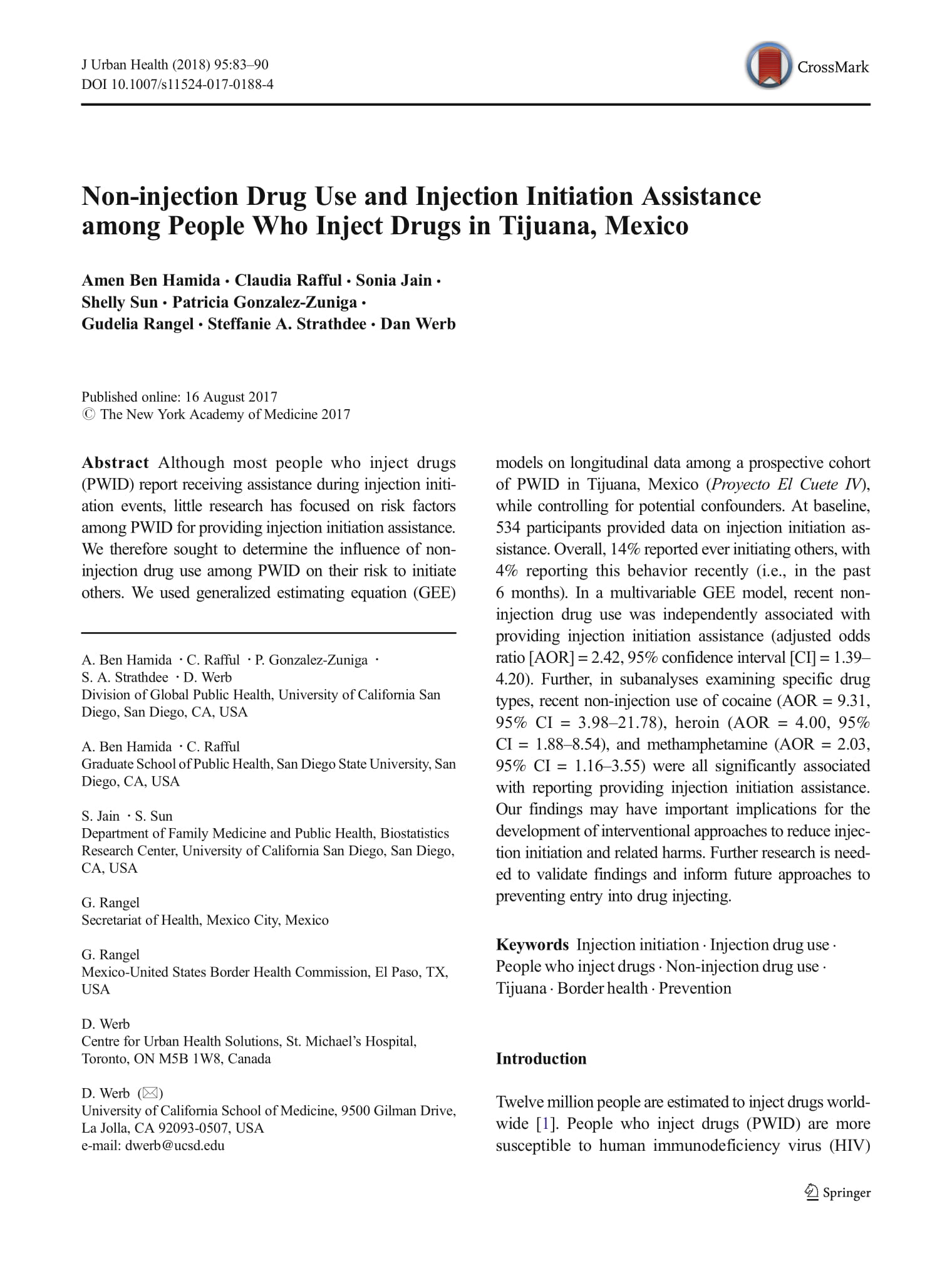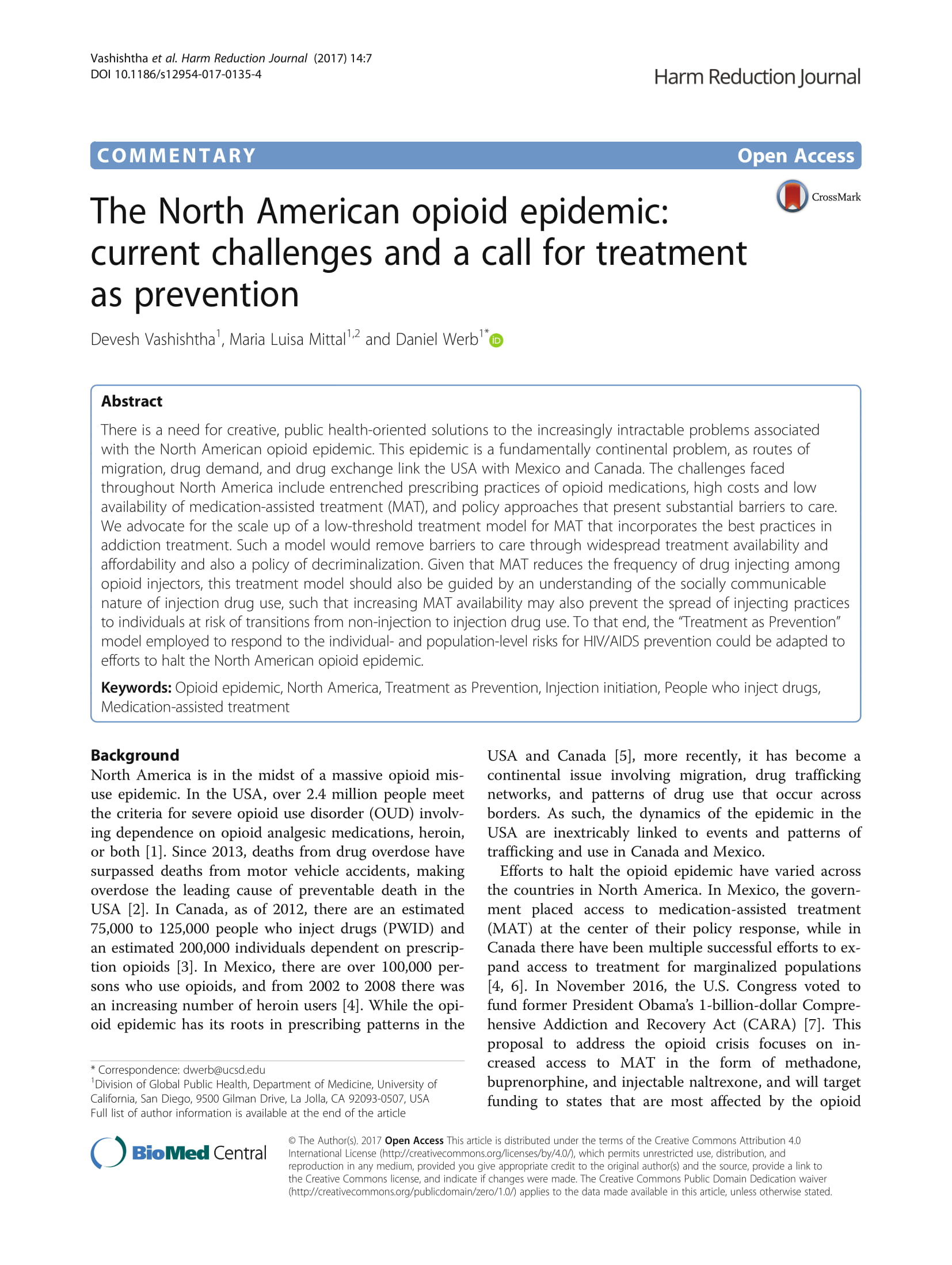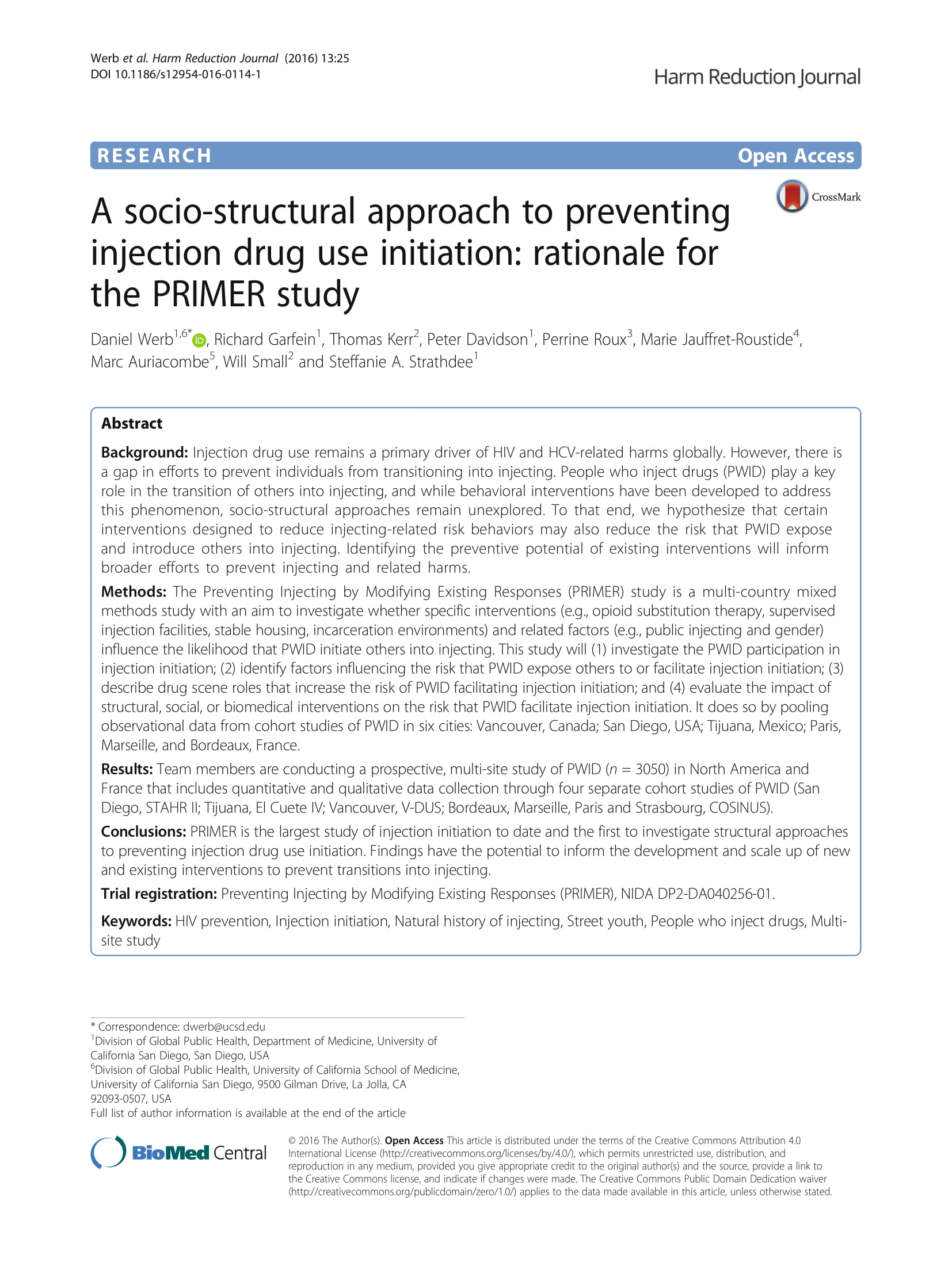Increased Non‐fatal Overdose Risk Associated with Involuntary Drug Treatment in a Longitudinal Study with People who Inject Drugs
Abstract
Aim: To assess the effect of involuntary drug treatment (IDT) on non‐fatal overdose among people who inject drugs (PWID).
Design: Longitudinal study.
Setting: Tijuana, Mexico.
Participants: Baseline sample of 671 PWID included 258 (38.4%) women and 413 (61.6%) men.
Measurements: Primary independent variables were reported recent (i.e. past 6 months) non‐fatal overdose event (dependent variable) and IDT. Substance use the day of the non‐fatal overdose was also examined.
Findings: From 2011 to 2017, 213 participants (31.7%) reported a recent non‐fatal overdose and 103 (15.4%) reported recent IDT. Heroin, in combination with methamphetamine and tranquilizers, were the drugs most reported at the day of the event. IDT significantly increased the odds of reporting a non‐fatal overdose event [adjusted odds ratio (aOR) = 1.76; 95% confidence interval (CI) = 1.04–2.96]. Odds of non‐fatal overdose also increased independently for each additional injection per day (aOR = 1.05; 95% CI = 1.02–1.08), recent tranquilizer use (aOR = 1.92; 95% CI = 1.41–2.61) and using hit doctors (aOR = 1.68; 95% CI = 1.29–2.18) and decreased with age (aOR = 0.97 per year, 95% CI = 0.95–0.99).
Conclusions: Recent involuntary drug treatment in Mexico is a risk factor for non‐fatal drug overdose.
View the full article.


